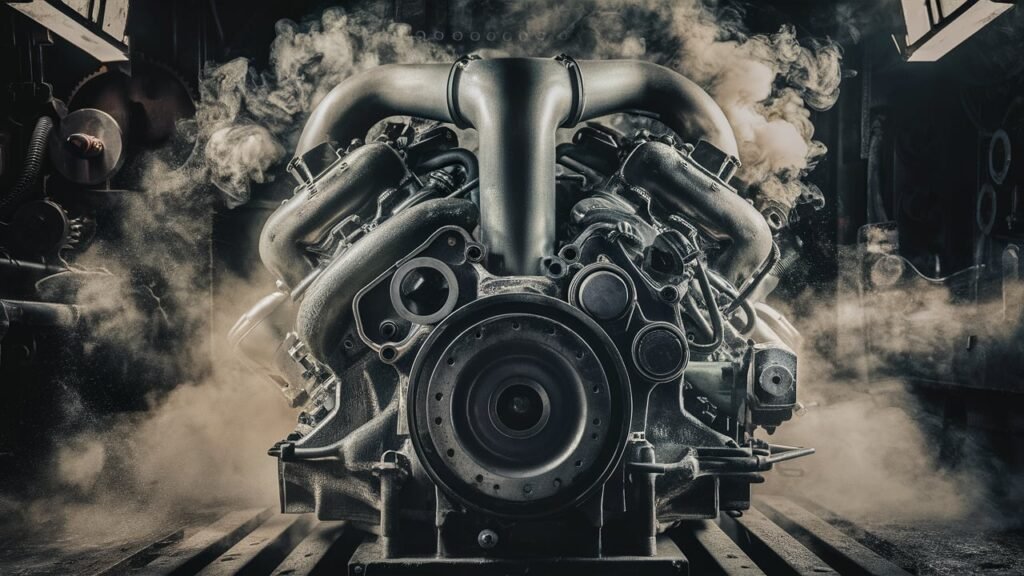
Unraveling the Mysteries of Engine Brake Fluid Boiling Points
The intricate dance of automotive performance hinges not only on the power produced by engines but also on the minutiae that often elude the casual observer. Delving into the esoteric realm of engine brake fluid boiling points unveils a fundamental aspect of vehicular safety and efficiency.
In this exploration, we dissect the critical role played by these elusive temperatures in maintaining operational integrity within braking systems, where precision is paramount amidst high-stress environments.
Boiling points serve as an unsung sentinel in the symphony of mechanical orchestration, quietly safeguarding against the perils lurking beneath the hood. As we peer beneath the surface, factors ranging from fluid composition to environmental conditions emerge as silent actors shaping this essential characteristic.
The alchemy between science and engineering manifests in a delicate balance that determines not just longevity but also reliability in stopping distances—where seconds can spell the difference between safety and catastrophe behind the wheel.
Engage with us as we unravel these mysteries, shedding light on how even imperceptible variations in temperature tolerance can tip the scales between optimal function and mechanical failure in automotive domains.
Understanding Brake Fluid Boiling Points.
Brake fluid boiling point refers to the temperature at which the liquid begins to vaporize within the braking system. This parameter is crucial in vehicle braking systems as it directly impacts braking efficiency and safety.
When high temperatures are generated during heavy braking or under severe driving conditions, the brake fluid’s boiling point becomes a critical factor. As brake fluid boils, it forms gas bubbles that compress under pressure, leading to a spongy pedal feel or even complete brake failure—an undesirable scenario for any driver.
High braking temperatures can significantly affect brake fluid performance by causing vapor lock or brake fade. Vapor lock occurs when the boiling brake fluid turns into gas bubbles that impede hydraulic pressure transmission, resulting in decreased brake pedal responsiveness.

Brake fade, on the other hand, happens when repetitive hard braking leads to overheating of the brakes and boiling of the fluid, diminishing stopping power and increasing stopping distances. Therefore, maintaining optimal brake fluid boiling points within the system is paramount for ensuring responsive and reliable braking performance during all driving conditions.
To maintain safe operation of a vehicle, it is imperative to monitor and sustain the recommended boiling points of brake fluids. Ensuring that the fluid remains within its specified range guarantees maximum heat dissipation and hydraulic pressure transfer efficiency during braking maneuvers.
By choosing brake fluids with appropriate boiling points suitable for specific driving environments—such as urban commuting versus track racing—vehicle operators can optimize their braking systems for improved safety and performance.
In essence, understanding and managing brake fluid boiling points is a fundamental aspect of responsible vehicle maintenance that directly correlates with overall road safety standards.
Types of Brake Fluids and Their Boiling Points.
Brake fluids are classified into various types based on their chemical compositions, each with distinct boiling points crucial for safe braking operations. The most common types include DOT 3, DOT 4, and DOT 5 brake fluids. DOT 3 typically has a boiling point ranging around 205 to 401 degrees Fahrenheit, suitable for regular passenger vehicles.
On the other hand, DOT 4 brake fluid offers higher performance with boiling points between 230 to 509 degrees Fahrenheit, making it more resilient under extreme conditions such as heavy loads or aggressive driving.
Lastly, DOT 5 silicone-based brake fluid boasts even higher boiling points ranging from approximately 356 to 644 degrees Fahrenheit, primarily used in specialized applications due to its unique properties.
When comparing synthetic versus conventional brake fluids concerning boiling points and performance in demanding scenarios like racing or towing heavy loads, synthetic formulations often exhibit superior thermal stability and higher boiling points.
Synthetic brake fluids like those meeting the DOT 5.1 specification can withstand elevated temperatures more effectively than conventional glycol-based fluids.
Factors influencing these variations in boiling points include the chemical composition of the brake fluid, additive packages designed to enhance performance under stress, and the presence of moisture-absorbing qualities that affect the overall boiling point equilibrium.
Maintenance of optimal brake fluid boiling points is paramount for ensuring efficient braking systems in vehicles across various operating conditions. Understanding the distinctions between different types of brake fluids and their respective boiling points equips automotive enthusiasts and mechanics with essential knowledge to select the most appropriate fluid for specific applications or environments.
It is essential to consider not only the initial boiling points but also how these values may change over time due to water absorption or contamination factors that could compromise braking safety if left unchecked.
Effects of Contamination on Brake Fluid Boiling Points.
Contamination, whether from water ingress or external substances, poses a significant risk to the boiling points of brake fluids. When water infiltrates the brake system due to worn seals or improper storage practices, it dilutes the brake fluid and significantly reduces its boiling point.
For instance, in a scenario where moisture-laden air gradually seeps into the brake lines over time, it can lower the boiling point of the fluid consistently. This can be particularly problematic during intense braking maneuvers when temperatures soar, causing the contaminated fluid to reach its reduced boiling point more quickly, leading to vapor lock and compromised braking performance.
Using contaminated brake fluid with diminished boiling points can have severe repercussions on braking efficiency. In extreme cases where brake fluid has absorbed excessive water content, such as in an off-road vehicle frequently exposed to wet environments without adequate maintenance, the diminished boiling point can result in sudden brake failure under heavy use conditions.

An example would be during prolonged downhill descents where continuous braking generates high temperatures; if the fluid boils prematurely due to contamination, it could lead to a loss of braking power precisely when it is most needed for control and safety.
Regular inspections and maintenance routines are imperative to counteract potential contamination-related issues that may compromise brake safety. By incorporating scheduled checks for water intrusion or other contaminants in the brake system—such as rust particles from corroded components—operators can detect early signs of contamination before they escalate into operational hazards.
Moreover, adhering to manufacturer-recommended intervals for replacing brake fluid helps maintain optimal boiling points and ensures that the system functions reliably under demanding operating conditions without succumbing to degradation caused by contamination-induced reductions in boiling points.
Testing Methods for Determining Brake Fluid Boiling Points.
Laboratory tests play a crucial role in accurately determining the boiling points of brake fluids. One common method used is the Dry and Wet Boiling Point Test, which evaluates both the dry boiling point (without any moisture absorption) and wet boiling point (post moisture absorption) of the brake fluid.
This test involves heating the brake fluid sample at a controlled rate while continuously monitoring its temperature until it reaches the point of vaporization, indicating its boiling point. By conducting this test, mechanics and automotive enthusiasts can assess the readiness of their brake fluid against high-temperature conditions that occur during heavy braking or under extreme driving scenarios.
Regular testing is paramount to ensure that brake fluids maintain safe operating temperatures within vehicles. Understanding the dynamic nature of brake fluid boiling points empowers operators to preemptively address any potential performance issues.

By adhering to routine testing schedules, operators can rectify low boiling points promptly, preventing safety hazards associated with brake failure due to overheating. These tests serve as preventive measures by providing valuable insights into the condition of the brake system and enabling timely interventions before adverse consequences arise.
After conducting laboratory tests on brake fluid samples, interpreting the results accurately is pivotal for taking appropriate action. Analyzing test data allows mechanics to gauge if a particular brand or type of brake fluid meets the required performance standards under varying temperatures.
Should test results indicate suboptimal boiling points, experts can recommend appropriate solutions such as upgrading to a higher-grade or synthetic brake fluid with superior thermal stability. Interpreting these results effectively enables vehicle operators to make informed decisions that enhance braking efficiency and overall system reliability for a safer driving experience.
Strategies for Improving Brake Fluid Boiling Points.
To enhance the performance and durability of brake fluid in high-temperature conditions, regular maintenance practices play a crucial role. One key tip is to adhere strictly to manufacturer-recommended brake fluid change intervals.
Fresh fluid has higher boiling points, ensuring optimal performance during intense braking situations. Additionally, maintaining proper brake system seals prevents moisture intrusion, preserving the fluid’s boiling point integrity. Regularly inspecting the entire brake system for leaks or worn components also aids in preventing potential contamination that can lower boiling points.
Choosing the appropriate type and quality of brake fluid is essential in improving overall system reliability. Selecting a brake fluid with a high wet boiling point is beneficial as it resists vapor lock and maintains consistent braking efficiency under demanding conditions.
For instance, DOT 4 synthetic fluids exhibit superior stability at elevated temperatures compared to conventional DOT 3 fluids, making them a preferred choice for high-performance vehicles subjected to aggressive driving conditions where braking temperatures soar.

Incorporating cooling systems or upgrades can effectively mitigate heat-related issues that impact brake fluid performance. Installing brake ducts that direct airflow to cool brakes during heavy use can significantly reduce operating temperatures within the braking system, thus safeguarding against premature fluid overheating and degradation.
Utilizing heat shields or insulating materials around critical brake components further aids in maintaining stable temperatures and preserving the integrity of the brake fluid over extended periods of heavy braking.
By implementing these strategies aimed at enhancing brake fluid boiling points, automotive enthusiasts and operators can ensure the longevity and efficiency of their braking systems, particularly under extreme operating conditions where thermal stress poses a risk to overall safety and performance.
Making informed choices regarding maintenance practices, selecting suitable brake fluids, and incorporating cooling solutions all contribute to safeguarding the vital role that optimal boiling points play in maintaining reliable stopping power when driving at the limits of vehicle capabilities.
Conclusion: Ensuring Safety Through Optimal Brake Fluid Boiling Points.
In conclusion, the meticulous understanding of engine brake fluid boiling points is indispensable for safeguarding the efficiency and reliability of braking systems in vehicles. The intricate interplay between temperature, fluid types, and contaminants underscores the critical role that optimal boiling points play in ensuring operational safety.
By adhering to rigorous maintenance practices, selecting appropriate high-quality brake fluids, and implementing strategic cooling solutions where necessary, automotive enthusiasts, mechanics, engineering students, and all vehicle operators can enhance the performance and longevity of their braking systems.
Prioritizing safe operating temperatures by monitoring and maintaining brake fluid boiling points not only enhances driver confidence but also contributes significantly to overall road safety.
By unraveling the mysteries surrounding engine brake fluid boiling points and embracing proactive measures to optimize these crucial parameters, individuals within the automotive community can uphold standards of excellence in vehicle performance while prioritizing the fundamental aspect of safety at every turn.




